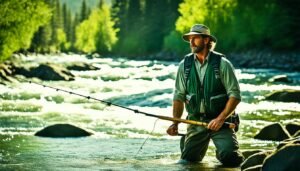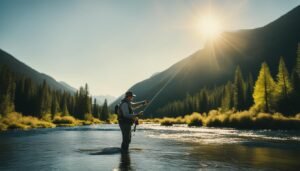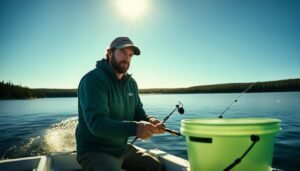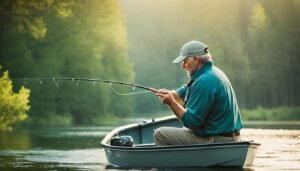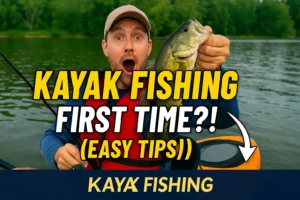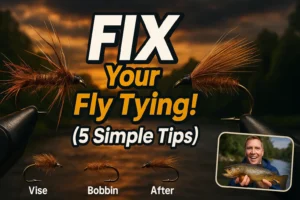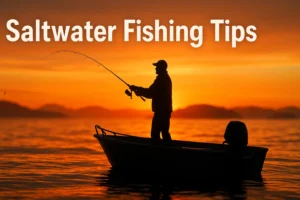Mastering the art of fishing can be a game-changer, whether you’re a novice or a seasoned angler.
From basic fishing tips and beginner fishing tips to fishing essentials and vital fishing tip, understanding the nuances can make all the difference. In this comprehensive guide, we’ll delve into a myriad of fishing tips and techniques that will elevate your angling game. Whether you prefer fly fishing in serene rivers or casting your line in the open sea, we’ve got you covered.
Discover how to finesse your casting skills, choose the right bait for different conditions, and adapt your approach based on the type of fish you’re targeting. Uncover the secrets of successful angling, including different fishing techniques, through expert insights and practical advice. Get ready to up your fishing game and reel in those elusive catches like never before.
Key Takeaways about Fishing Techniques and Tips
- Take the time to understand the basics: Before diving into advanced techniques, make sure you have a solid grasp of the fundamental principles of fishing. Practice casting and knot tying to build a strong foundation.
- Consider environmental factors: Pay attention to weather conditions, water temperature, and the behavior of the fish in order to adapt your techniques accordingly. This can significantly improve your chances of a successful catch.
- Prioritize safety: Always prioritize safety when fishing. Wear appropriate gear, be mindful of your surroundings, and follow local regulations to ensure a safe and enjoyable experience.
- Explore different types of fishing: Experiment with various types of fishing such as fly fishing, ice fishing, or shore fishing to broaden your skills and discover what suits you best.
- Continuous skill development: Keep honing your skills by seeking guidance from experienced anglers, watching tutorials, and learning from your own experiences on the water.
- Practice patience and perseverance: Fishing requires patience and perseverance. Embrace the process and enjoy the tranquility of the outdoors while waiting for that perfect catch.
Understanding the Basics
Choosing Your Gear
When you’re just starting to fish, it’s super important to pick the right gear for the type of fish you want to catch. You don’t want to use just any old rod and reel – you need special gear that’s made for the kind of fish you’re after. Think about how big the fish you’re going for is, because that will help you choose the right strength and flexibility for your equipment.
And don’t forget to make sure your gear matches the type of fishing you’ll be doing – like if you’re fishing in a lake, the ocean, or using fly fishing techniques. It’s all about picking the right tools for the job!

- Choose gear based on the type of fish you want to catch
- Consider the size of the fish when selecting the strength and flexibility of your equipment
- Match your gear to the type of fishing you’ll be doing, such as lake, ocean, or fly fishing techniques
Lure Selection
When you’re fishing, it’s super important to think about what the fish can see. Just like how we wear clothes that match the weather, fish like lures that match the water they swim in. If the water is kind of green, a green lure might be a good choice. If it’s more brown, a brown lure could work better. It’s all about blending in! Also, fish have their favorite snacks, just like us.
So, if you use a lure that looks like the little fish they love to eat, they’ll be more likely to take a bite. And just like how some of us like big snacks and others like small ones, different fish like different sizes of lures. So, it’s smart to try out a few different sizes to see which one the fish are really into. And don’t forget to have fun trying out all these different lures – it’s like a cool experiment where you get to learn which ones work best in different places and times!
Lure Color | Water Color | Effect |
|---|---|---|
Green | Green | Blends in well |
Brown | Brown | Blends in well |
Silver | Clear | Mimics natural baitfish |
Chartreuse | Murky | Attracts attention |
Red | Dark | Mimics injured prey |
White | Any | Versatile and visible |
Line Types
When you go fishing, it’s super important to pick the right kind of fishing line. If you’re using lures, which are like pretend bugs or fish that you use to trick real fish, then braid lines are a good choice. These lines are super sensitive, which means you can feel even the tiniest nibble from a fish. But if you’re using bait, like worms or minnows, then monofilament lines are better. They have more stretch, which helps when you’re trying to hook the fish.
It’s also really important to think about the kind of fish you want to catch and how they act in the water. Different fish like to do different things, so you need to use the right line to catch them. You also have to think about where you’re fishing and how clear the water is. If the water is really clear, then you might need a different line than if it’s all muddy.
So, always make sure to pick the right fishing line for what you’re doing and where you’re doing it. That way, you’ll have a better chance of catching some awesome fish!
Line Type | Pros | Cons |
|---|---|---|
Monofilament | Stretchy, easy to handle, affordable | Prone to twisting and memory, less durable |
Fluorocarbon | Virtually invisible underwater, abrasion-resistant | More expensive, less stretch |
Braided | Strong, sensitive, thin diameter | Expensive, can be difficult to handle |
Hook Sharpening
Using sharp hooks is paramount for successful hook-ups. Regularly sharpen old hooks to maintain their effectiveness; a dull hook can result in missed opportunities. Investing in a quality hook sharpening tool is a wise decision, as it ensures that your hooks remain razor-sharp at all times. Before each fishing trip, it’s essential to check the sharpness of your hooks; this simple practice can make a significant difference in your overall fishing experience.
Advanced Techniques
Mastering Trolling
When fishing, observe how the lure behaves next to the boat before trolling. This allows you to assess its movement and make adjustments as needed. By doing this, you can ensure that the lure looks natural and enticing in the water, increasing your chances of attracting fish. It’s crucial to pay attention to the lure’s action and make necessary modifications for optimal performance.

Adjust the trolling speed based on the lure’s performance. If the lure seems too slow or fast, alter the speed to match the desired action. This way, you can effectively control the presentation of the lure, making it more appealing to various fish species. Different fish may respond better to different speeds, so being able to adjust accordingly is essential for a successful fishing trip.
Vary the trolling depth to find where the fish are biting. Fish often inhabit different depths depending on factors such as water temperature and time of day. By experimenting with various depths, you can locate the optimal zone where fish are actively feeding. This technique increases your chances of catching fish by targeting their specific location in the water column.
Use different trolling patterns to attract fish. Changing up your trolling patterns can pique the interest of fish that may be hesitant to bite. By incorporating variations in your trolling approach, such as altering the path or speed, you can create a diverse and intriguing presentation that entices fish to strike.
- Observe lure behavior before trolling
- Adjust trolling speed based on lure performance
- Vary trolling depth to find fish
- Use different trolling patterns to attract fish
Rigging Skills
To enhance your fishing prowess, it’s essential to learn different rigging techniques suitable for various fishing scenarios. Each fishing situation may require a specific rig setup, so having a repertoire of rigging skills at your disposal is advantageous. Familiarize yourself with a range of rigging options to adapt to different fishing conditions effectively.
Practice tying knots efficiently to avoid losing fish during your angling expeditions. Secure and reliable knots are crucial for ensuring that your line remains intact when reeling in a catch. Regular practice helps improve your knot-tying proficiency and reduces the likelihood of losing fish due to poorly tied knots.
Experiment with different rigs to determine which ones work best for specific fishing situations. Not all rigs are equally effective in every scenario, so it’s beneficial to explore various rigging options. Through experimentation, you can identify the most productive rigs for different types of fish and environmental conditions.
Keep your rigging tools organized and easily accessible. Maintaining an organized setup for your rigging tools streamlines your fishing process and minimizes downtime spent searching for equipment. Having easy access to your rigging tools allows for swift adjustments and replacements, ensuring that you can adapt quickly while out on the water.
Fishing Scenario | Rigging Technique |
|---|---|
Deep Sea Fishing | Wire leaders and heavy-duty swivels for large, aggressive fish |
Freshwater Lake Fishing | Slip bobber rigs for suspended fish or Texas rigs for bottom-dwelling fish |
Fly Fishing | Tapered leaders and tippet for delicate presentations |
Surf Fishing | Fishfinder rigs for casting long distances and targeting bottom-dwelling fish |
Ice Fishing | Tip-up rigs for setting multiple lines and covering a larger area |
Lure Presentation
Mastering the art of presenting lures naturally in the water is crucial for enticing fish strikes. Understanding how to manipulate lures in a lifelike manner significantly increases their appeal to nearby fish. By mastering this skill, you can elevate your chances of successfully attracting fish during each fishing excursion.
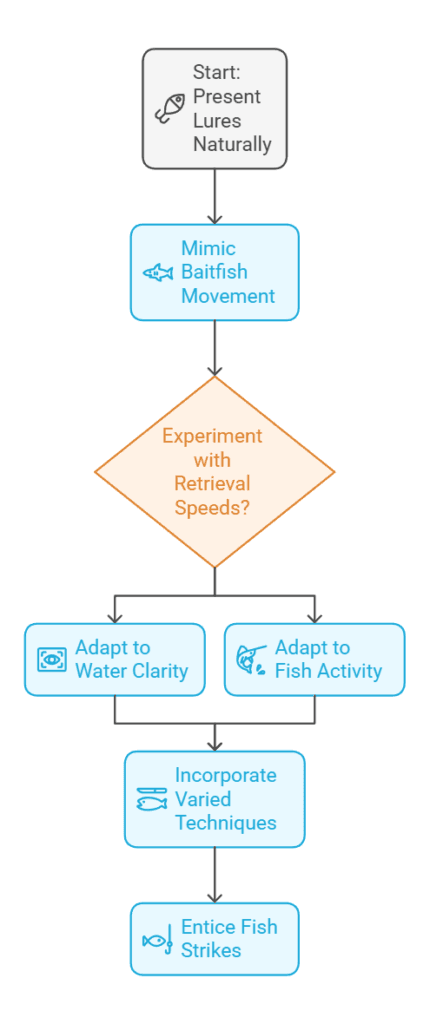
Mimic the movement of real baitfish when presenting lures in the water. Fish are naturally drawn to realistic movements that resemble their natural prey. By emulating the motions of live baitfish, you can create an irresistible allure that entices fish into striking your lures.
Experiment with retrieval speeds to find the most effective lure presentation for different fishing conditions. Adapting your retrieval speed based on factors such as water clarity and fish activity levels enhances your ability to tailor lure presentations that resonate with the preferences of target fish species.
Use different techniques like jerking or pausing while retrieving lures to entice strikes from nearby fish. Incorporating varied techniques into your lure presentation diversifies its appeal, making it more enticing to curious or cautious fish species.
Mastering the Art of Lure Presentation: 5 Tips for Attracting Fish
- Mimic the movement of real baitfish: When presenting lures in the water, it’s essential to emulate the natural movements of live baitfish to attract nearby fish. This realistic motion can significantly increase the appeal of your lures and entice fish into striking.
- Experiment with retrieval speeds: To find the most effective lure presentation for different fishing conditions, it’s crucial to adapt your retrieval speed. Factors such as water clarity and fish activity levels should be considered when adjusting your retrieval speed to tailor lure presentations to the preferences of target fish species.
- Use different techniques: Incorporating varied techniques like jerking or pausing while retrieving lures can help entice strikes from nearby fish. Diversifying your lure presentation with different techniques can make it more enticing to curious or cautious fish species.
- Pay attention to detail: When presenting lures in the water, pay close attention to details such as the depth at which the lure is presented and the angle at which it moves. These small details can make a significant difference in the effectiveness of your lure presentation.
- Practice and observe: Mastering the art of presenting lures naturally in the water takes practice and observation. Spend time honing your skills and pay attention to how fish respond to different lure presentations. This will help you refine your techniques and increase your chances of successfully attracting fish during each fishing excursion.
Environmental Factors
Tides and Currents
Understanding how tides and currents affect fish behavior is crucial for successful fishing. Fish tend to be more active during the incoming tide, so plan your fishing trips around these tidal movements. Adjust your fishing location according to changing currents, as fish often move with the flow of water. Utilize tide charts to plan your fishing trips effectively, ensuring you are in the right place at the right time.
Fishing strategically based on tidal movements can significantly improve your chances of catching fish. As the tide comes in, it brings food and nutrients that attract fish closer to the shore. By positioning yourself strategically, you can take advantage of this natural phenomenon to increase your catch. Conversely, during outgoing tides, fish tend to move towards deeper waters, so adjusting your fishing location accordingly is essential for a successful trip.
Location | High Tide Schedule | Low Tide Schedule |
|---|---|---|
Vancouver | 10:00 AM, 8:00 PM | 4:00 AM, 2:00 PM |
Victoria | 9:30 AM, 7:30 PM | 3:30 AM, 1:30 PM |
Halifax | 11:00 AM, 9:00 PM | 5:00 AM, 3:00 PM |
St. John’s | 10:30 AM, 8:30 PM | 4:30 AM, 2:30 PM |
Toronto | 11:45 AM, 9:45 PM | 5:45 AM, 3:45 PM |
Montreal | 11:15 AM, 9:15 PM | 5:15 AM, 3:15 PM |
Quebec City | 10:45 AM, 8:45 PM | 4:45 AM, 2:45 PM |
Calgary | 12:00 PM, 10:00 PM | 6:00 AM, 4:00 PM |
Ottawa | 11:30 AM, 9:30 PM | 5:30 AM, 3:30 PM |
Winnipeg | 12:15 PM, 10:15 PM | 6:15 AM, 4:15 PM |
Types of Fishing
Freshwater Angling
When it comes to freshwater angling, there are a variety of locations that offer excellent fishing opportunities. From serene lakes to meandering rivers, freshwater environments provide diverse habitats for various fish species. For instance, targeting bass in a calm lake might require different techniques compared to pursuing trout in a fast-flowing river. Each location demands adapting your techniques to suit the specific characteristics of the freshwater environment.
When engaging in freshwater angling, it’s crucial to use the appropriate gear and lures for targeting specific species. For example, using lightweight spinning rods and reels can be effective when pursuing panfish like crappie or bluegill. On the other hand, heavier baitcasting equipment may be more suitable for targeting larger predatory species such as pike or muskie. Experimenting with different methods, such as fly fishing or bait fishing, can also enhance your success in freshwater environments.
Moreover, freshwater anglers often find success by exploring various fishing methods such as trolling, still fishing, or casting. Each method offers its own advantages depending on the location and target species. Understanding the behavior and feeding patterns of freshwater fish is essential for honing your skills and achieving success in these diverse environments.
Freshwater Angling Techniques | Suitable Gear and Lures | Fishing Methods |
|---|---|---|
Targeting bass in a calm lake | Lightweight spinning rods and reels | Trolling, still fishing, or casting |
Pursuing trout in a fast-flowing river | Lightweight spinning rods and reels | Trolling, still fishing, or casting |
Pursuing panfish like crappie or bluegill | Lightweight spinning rods and reels | Trolling, still fishing, or casting |
Targeting larger predatory species such as pike or muskie | Heavier baitcasting equipment | Trolling, still fishing, or casting |
Experimenting with different methods | Varies depending on method (e.g., fly fishing or bait fishing) | Varies depending on method (e.g., fly fishing or bait fishing) |
Saltwater Excursions
For saltwater excursions, it’s essential to prepare by selecting the right gear that can withstand the corrosive nature of saltwater. Saltwater fishing requires specialized equipment designed to resist the damaging effects of salt. This includes using corrosion-resistant reels and rods, as well as ensuring that all metal components are adequately protected against rust.
Furthermore, understanding the behavior and habits of saltwater species is crucial for a successful saltwater fishing experience. Different species exhibit unique feeding patterns and behaviors based on factors such as tides, currents, and water temperature. By learning about these nuances, anglers can adapt their techniques to effectively target various saltwater species.
Adapting fishing techniques to the challenges of saltwater environments is vital for success. Factors such as strong currents, tidal movements, and deeper waters present unique challenges that require adjustments in fishing tactics. Whether it’s surf fishing from the shore or deep-sea fishing from a boat, anglers must be prepared to modify their strategies based on the specific conditions of saltwater environments.
Boat Fishing Tactics
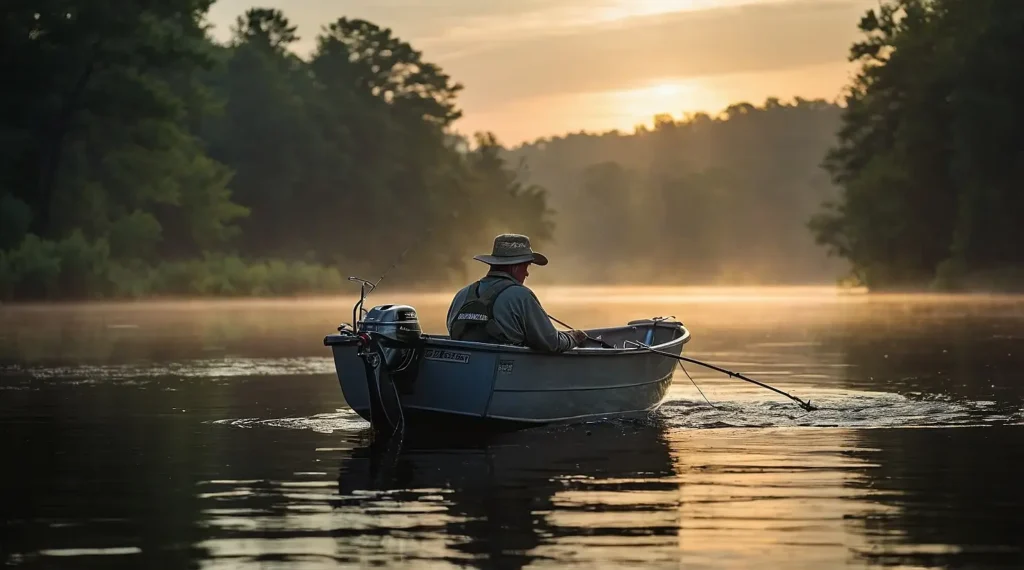
When it comes to boat fishing tactics, anglers have the advantage of accessing a wider range of fishing opportunities compared to shore-based angling. Utilizing different fishing tactics while on a boat allows anglers to explore various depths and structures where fish are likely to congregate. Techniques such as drift fishing, bottom fishing, and jigging can be particularly effective when boat fishing.
Optimizing your boat’s position is crucial for maximizing fishing opportunities. This involves considering factors such as wind direction, current speed, and water depth to position the boat strategically for successful angling. Experimenting with trolling – dragging lures behind a moving boat – and casting from a boat can yield productive results when targeting different species in open waters.
Considering environmental factors such as wind speed and direction, water currents, and underwater structures is essential when formulating effective boat fishing tactics. These factors play a significant role in determining where fish are likely to be located and how they will respond to different bait presentations.
Safety First
Essential Precautions
When fishing, safety should always be a top priority. Always wear a life jacket, especially if you’re on a boat or fishing in deep waters. It’s crucial to be mindful of your surroundings and any potential hazards. Whether you’re fishing from the shore or a boat, being aware of your environment can prevent accidents.
Carrying essential safety equipment is vital for every fishing trip. This includes a first aid kit, sunscreen, insect repellent, and a whistle for signaling in case of emergencies. These items can make a significant difference in ensuring your safety and well-being while out on the water.
Before heading out for a day of fishing, it’s important to stay informed about the weather conditions. Check the forecast and be prepared for any changes that may occur throughout the day. Sudden storms or strong winds can pose serious risks to anglers, so staying updated on weather patterns is crucial for a safe fishing experience.
Gear Safety Checks
Regularly inspecting your fishing gear is essential to ensure everything is in good working condition. Check your rod guides and reel components for any signs of damage or wear. If you notice any issues, address them immediately to prevent potential accidents or malfunctions while fishing.
Another critical aspect of gear safety is checking your fishing line. Look for any fraying or weakening of the line, as this could lead to breakage when reeling in a catch. It’s important to replace any damaged line promptly to avoid losing a potential catch due to equipment failure.
Properly storing your gear when not in use can also contribute to its longevity and safety. Keep rods and reels in a dry, cool place to prevent corrosion and damage caused by exposure to moisture or extreme temperatures. By maintaining your gear properly, you can ensure that it remains safe and functional for all your fishing adventures.
Top 5 Fishing Gear Safety Tips
- Regularly inspect your fishing gear for any signs of damage or wear, including rod guides and reel components.
- Check your fishing line for fraying or weakening, and replace any damaged line promptly to avoid equipment failure.
- Properly store your gear in a dry, cool place when not in use to prevent corrosion and damage from exposure to moisture or extreme temperatures.
- Always address any issues with your gear immediately to prevent potential accidents or malfunctions while fishing.
- Maintain your gear properly to ensure its longevity and safety for all your fishing adventures.
Developing Skills
Reel Drag Understanding
Understanding the reel drag system is crucial for successful fishing. To adjust the drag effectively, familiarize yourself with the specific settings on your reel. Different fish species require varying amounts of pressure to tire them out. Set the drag according to the targeted fish species to prevent line breakage while reeling in a catch. Experiment with adjusting the drag under different conditions such as strong currents or calm waters to gain practical experience. Properly adjusted reel drag plays a pivotal role in successfully landing fish without losing them during the fight.
Adapting Strategies
Flexibility is key when it comes to fishing. Adapting your strategies to changing conditions significantly improves your chances of success. Experiment with various fishing techniques and observe which ones yield better results. Stay open to trying new approaches and methods, even if they differ from your usual routine. Embracing adaptability allows you to respond effectively to different environments and fish behaviors. Consider adjusting your fishing style based on feedback from each trip. This adaptive approach enhances your overall fishing skills and increases your chances of a successful catch.
Patience Building
Developing patience is an essential skill for any angler. Embrace the waiting game as an integral part of the fishing experience, recognizing that patience often leads to rewarding catches. Practice mindfulness techniques to stay patient while waiting for a bite, such as focusing on your surroundings and appreciating nature’s beauty. Enjoying the process of fishing itself can help you build patience over time. By savoring each moment on the water, you’ll find that waiting becomes an enjoyable part of the journey, rather than a tedious task.
Mastering Reel Drag Adjustment for Landing Fish
- Familiarize yourself with specific settings on your reel to adjust the drag effectively
- Set the drag according to the targeted fish species to prevent line breakage
- Experiment with adjusting the drag under different conditions for practical experience
- Properly adjusted reel drag plays a pivotal role in successfully landing fish without losing them during the fight
Final Remarks
You’ve now gained a comprehensive understanding of various fishing techniques and tips, from the basics to advanced strategies, considering environmental factors, different types of fishing, and prioritizing safety while honing your skills. With this knowledge, you’re well-equipped to embark on successful fishing expeditions and elevate your overall fishing experience.
Now it’s time to put these insights into action. Head out to your favorite fishing spot, apply these techniques, and adapt them to suit different conditions. Remember, practice makes perfect, so keep refining your skills. Stay safe, respect the environment, and enjoy the rewarding pursuit of fishing!
Frequently Asked Questions (FAQs) about Mastering the Art of Fishing
What does it really take to master the art of fishing?
Look, it’s not about having the latest gadgets or a fancy boat. Mastering the art of fishing comes down to skill, knowledge, and time on the water. You need to understand fish behavior, learn the right fishing techniques, and put in the work. It’s about constant learning, adapting, and refining your approach. There are no shortcuts to becoming a skilled angler.
What’s the most important thing for a beginner to focus on?
Fundamentals. Forget the advanced stuff for now. Master the basics:
- Casting: Learn how to cast accurately and efficiently.
- Knot Tying: A bad knot will cost you fish. Learn essential fishing knots like the Palomar, Improved Clinch, and Surgeon’s Knot.
- Bait Presentation: Learn how to make your bait or lure look natural and appealing to the fish.
Master these, and you’re already ahead of most people on the water.
Fishing gear can be expensive. How important is it to have top-of-the-line stuff?
Here’s the truth: good gear helps, but it won’t make you a master angler overnight. You need fishing equipment that’s reliable and functional.
- Rod Selection: Choose a rod that’s appropriate for the type of fishing you’re doing and the fish species you’re targeting.
- Reel Types: Get a smooth, durable reel with a good drag system.
- Fishing Line: Don’t cheap out. Monofilament, braided line, and fluorocarbon each have their uses.
Invest in quality, but remember: it’s the angler, not the gear, that catches fish.
How do I choose the right bait or lure?
Lure selection and bait selection are about matching the hatch and understanding the conditions.
- Water Clarity: Use natural colors in clear water, brighter colors in stained water.
- Depth: Choose lures that run at the right depth.
- Season: Fish prefer different baits and lures depending on the time of year.
- Forage: What are the fish feeding on? Match your bait or lure to their natural prey.
Pro Tip: Don’t be afraid to experiment. Sometimes the best lure is the one the fish haven’t seen before.
What are some essential fishing techniques I need to learn?
Here’s your core curriculum:
- Casting: Master precision casting and long-distance casting. Practice different casting methods.
- Retrieving: Learn different retrieve speeds and techniques – slow, fast, erratic – to trigger strikes.
- Flipping and Pitching: Essential for getting your bait into tight cover.
- Reading the Water: Learn to identify underwater structures, vegetation, and other fish-holding areas.
- Seasonal Adjustments: Learn seasonal fishing patterns and adjust accordingly.
How do I find the fish? What are some tips for that?
Stop guessing. Start learning. Fish aren’t just randomly swimming around. They relate to underwater structure, depth, temperature, and food sources.
- Study the Water: Learn to read water clarity, current patterns, and identify potential holding areas.
- Use a Fish Finder: It’s not cheating, it’s being efficient. A good fish finder can show you where the fish are and what the bottom looks like.
- Understand Fish Behavior: Fish have patterns. Learn how they behave in different seasons, weather conditions, and times of day.
What’s the deal with fish behavior? How does it affect my fishing?
Fish psychology is your secret weapon. These creatures are driven by instinct: food, safety, and reproduction.
- Seasonal Patterns: Fish move and feed differently throughout the year. Learn these seasonal fishing patterns.
- Weather: Pay attention to barometric pressure, wind, and temperature. They all affect fish activity.
- Time of Day: Dawn and dusk are often prime feeding times.
Think like a predator. Where would you hide if you were a fish? Where would you ambush your prey?
How do I choose between freshwater fishing and saltwater fishing?
It depends on your location, preferences, and target species.
- Freshwater Fishing: Generally more accessible, with a wider variety of fishing techniques and species. Think bass, trout, pike, walleye.
- Saltwater Fishing: Offers the chance to catch bigger, stronger fish. Requires specialized gear and knowledge. Think salmon, tuna, marlin, tarpon.
Pro Tip: Try both and see which one you enjoy more.
What are some advanced fishing techniques for experienced anglers?
If you want to catch bigger fish and more of them, you need to step up your game.
- Sight Fishing: Learn how to spot fish in clear water and present your bait or lure to them.
- Flipping and Pitching: Master these techniques for getting your bait into heavy cover.
- Deep Water Fishing: Learn how to target fish in deep water using specialized lures and techniques.
- Fly Fishing: A challenging but rewarding technique that requires specialized gear and skills.
What’s the best way to learn more about fishing and improve my skills?
- Read: Books, magazines, online articles – soak up knowledge.
- Watch Videos: YouTube is a great resource for learning fishing techniques.
- Hire a Guide: A good guide can teach you more in a day than you could learn in a year on your own.
- Join a Fishing Club: Connect with other anglers and share knowledge.
- Spend Time on the Water: There’s no substitute for experience.
How important are fishing knots and rigging?
They’re crucial. A bad knot will fail under pressure, and you’ll lose the fish of a lifetime.
- Essential Knots: Learn the Palomar, Improved Clinch, Uni Knot, and Surgeon’s Knot.
- Rigging Techniques: Different rigs, like the Carolina Rig, Texas Rig, and Drop Shot Rig, are designed for specific situations.
Pro Tip: Practice your knots until you can tie them in your sleep. It’ll pay off when it counts.
How can I be a more ethical and responsible angler?
It’s our responsibility to protect the resource.
- Catch and Release: Practice catch and release, especially for trophy fish or species that are struggling.
- Proper Handling: Handle fish with care to minimize stress and injury.
- Follow Regulations: Know the fishing regulations for your area and stick to them.
- Leave No Trace: Pack out your trash, don’t pollute the water, and minimize your impact on the environment.
- Promote Conservation: Support organizations that are working to protect fish habitats and promote sustainable fishing.
How can fishing be seen as a form of environmental stewardship?
Anglers can be important allies in conservation.
- Habitat Preservation: Support efforts to protect and restore fish habitats.
- Sustainable Practices: Use fishing techniques that minimize harm to the environment.
- Citizen Science: Participate in research and monitoring programs.
- Education: Spread the word about responsible fishing practices.
How can I stay safe while fishing?
Safety should always be your top priority.
- Wear a Life Jacket: Especially when boating or wading in deep water.
- Check the Weather: Be aware of changing conditions and potential hazards.
- Let Someone Know Your Plans: Tell someone where you’re going and when you’ll be back.
- Carry a First Aid Kit: Be prepared for minor injuries.
- Learn Basic Survival Skills: Know how to build a fire, find shelter, and signal for help.
What are fishing regulations and why are they important?
Fishing regulations are rules that govern fishing activities.
- Licenses: Most places require a fishing license.
- Limits: There are often limits on the number and size of fish you can keep.
- Seasons: Some fish species can only be caught during specific seasons.
- Protected Areas: Certain areas may be closed to fishing to protect spawning grounds or sensitive habitats.
Regulations are in place to ensure sustainable fish populations and protect the environment. Always check the local fishing regulations before you go.
Any final words of wisdom for someone looking to master the art of fishing?
Yeah, be patient, be observant, and never stop learning. Fishing is a lifelong pursuit. There’s always something new to discover, new techniques to try, and new challenges to overcome. Embrace the journey, respect the resource, and enjoy the process. Now get out there and catch some fish!
Related Blog Posts
River Fishing Techniques in 2026: The 30-Minute System to Find Fish Faster
River Fishing Techniques in 2026: a simple system to read rivers, pick winning rigs, and catch more …
Read MoreSaltwater Fishing: From First Cast to First Catch (and Beyond)
Discover the essentials of Saltwater Fishing along Canada's coastlines. Learn about gear selection, …
Read MoreThe Ultimate Guide to Fly Fishing Techniques: From First Cast to First Fish
Master core fly fishing techniques with an easy roadmap from first cast to first fish, plus pro tips…
Read MoreFishing with Live Bait: Your Pro-Guide Playbook for More Bites, Less Guessing
Master fishing with live bait: simple rigs, seasonal strategies and ethical tactics to catch more fi…
Read MoreDrift Fishing Techniques: Go With the Flow and Catch More Fish
Master drift fishing techniques with simple rigs, gear tips, and pro tricks to catch more fish from …
Read MoreThe Complete Guide to Ice Fishing in Canada: Everything You Need to Know for 2025
Complete guides and tips for ice fishing in Canada. Learn about safety, gear, techniques, and the be…
Read MoreEasy Kayak Fishing Techniques for Beginners
Learn easy kayak fishing techniques for beginners! Simple tips on kayaks, paddling, gear, casting, a…
Read MoreTop Saltwater Fishing Tips for Canada (2025)
Easy saltwater fishing tips for Canada! Learn to catch more salmon & halibut. Get simple advice on g…
Read More